The iniquity of homelessness
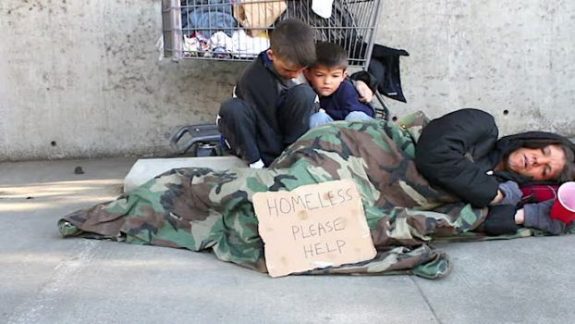
By Ad astra
What thought do we, who curl up in a warm bed after a good meal and an evening watching our favourite TV shows in the comfort of our homes, give to those who have no home, or worse still, nowhere to sleep? How aware are we of the extent of homelessness in our own country?
What follows here is largely drawn from a simple Google search for ‘Homelessness in Australia’. Let’s then start with some facts from Wikipedia.
There were 105,000 homeless people in Australia on the night of the 2011 census, one in every 200 Australians. This was a 17% increase from the 2006 census. We will not know the extent of homelessness at the 2106 census until 2018.
Who are the homeless?
They are categorized as those living in:
- improvised dwellings, tents, sleepers out
- supported accommodation
- people staying with other households
- boarding houses
- other temporary lodgings
- severely overcrowded dwellings.
Almost 40% were in the last category. 6% were ‘sleeping rough’; it is a myth that most homeless people sleep on the streets.
To flesh these bare facts and figures out a little, many women, young people and families move from one refuge to another, or ‘couch surf’, or sleep in their cars, or live in cheap accommodation. Some live in severely overcrowded dwellings that fall well below basic community standards, such as boarding houses and caravan parks.
56% of the homeless were male, 44% female. 30% were born overseas.
Indigenous people made up 25% of the homeless, although they constitute only 2.5% of our population.
The age of homeless people extends across all age groups, but disturbingly 17% are under 12 and 42% are under 25. A few are over 75! It is a myth that most homeless are middle-aged men.
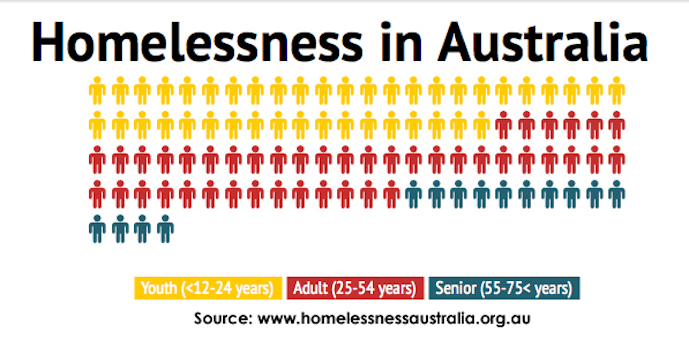
The causes of homelessness are myriad: unemployment, mental illness, financial troubles, drug or alcohol abuse, gambling, bereavement, loss of a job, and disability. Broken marriages and domestic violence often bring about homelessness. The homeless suffer poor health and isolation.
It is a myth that being homeless is a choice.
Domestic violence is one of the main reasons people seek help from a homeless service. Every week, women across Australia, often with children, escape abusive partners with nowhere to go and no other option.
There are some other myths that need dispelling: The following account of these myths and their rebuttal appears on the Mission Australia website:
Homeless people just need to get a job:
The high cost of rental housing, particularly for low-income earners, forces many families and individuals out of their homes with no place else to live. Many of these people have a good education and jobs, but simply don’t earn enough to cover rent and their basic needs. People whose physical or mental disability means they are unable to work, or who care for others, face additional barriers to finding suitable, affordable accommodation.Homelessness is simply about physical housing and ‘rooflessness’:
Having a safe and secure place to sleep is vital to a person’s health and wellbeing. For some people, finding somewhere to live that they can afford is all it takes to solve their homelessness. But for most, it takes more than that. They need assistance to gain life skills to be able to stand for themselves. Support such as financial advice, living skills training, mental health counselling, help in overcoming addictions, and job search assistance is crucial for people to break the cycle of homelessness and achieve independence.Homelessness will never happen to me.
For thousands of Australians, the risk of losing their home is only one pay slip away. Factors such as sudden job loss, injury, illness, family breakdown or another unexpected disruption can affect anyone.We will never solve homelessness.
Alarmingly, social and economic factors are contributing to more and more Australians facing the risk of homelessness. However, Mission Australia’s work is making a big difference. In 2016, through our 62 homelessness and housing services we supported 18,529 people to get back on their feet and move towards rebuilding an independent life for themselves. By the community and governments working together, we can halve homelessness in Australia by 2025.
What can, what is being done to combat homelessness?
In our largest capital cities there has been a focus on ‘removing’ the homeless from Flinders Street or Martin Place, where they are seen as ‘an eyesore’. Every year executives ‘experience’ the discomfort of ‘sleeping rough’ when they curl up in their sleeping bags during a mid-winter night to ‘identify’ with street sleepers. It’s fine gesture, but how has it improved the lot of the homeless? There’s a website: Homeless in Australia – what is being done? that details some of the solutions:
- more low cost accommodation
- increased levels of support for people with a disability
- support for individuals as they negotiate the changing labour market
- greater access to family and relationship counselling programs to reduce the levels of domestic violence and alcohol and other drug misuse within the community
- initiatives which build stronger communities so resources and networks are in place to support people in their community.
Thereafter follows a list of programs (Commonwealth, State and Local) that governments in Australia run and/or fund with a view to alleviating or preventing homelessness:
- The Supported Assistance Program (SAAP)
- The Commonwealth – State Housing Agreement and the Crisis Accomodation Program
- Rent Assistance (RA)
- The Emergency Relief Program (ERP)
- The National Homelessness Strategy
None of these were accessible online as the server could not be found!
We have to go overseas for inspiration.
Finland stands out among many European nations struggling with the problem of homelessness as one that has found a solution – give the homeless a home!
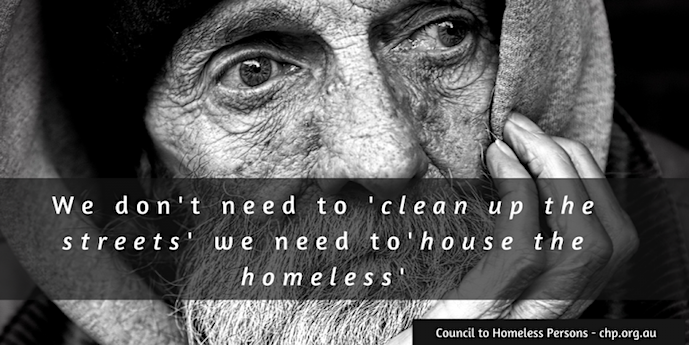
Here are some excerpts from an article about the Finnish solution in The Guardian by Dawn Foster written in March of this year:
So how has the country done it? By giving homeless people permanent housing as soon as they become homeless, rather than muddling along with various services that may eventually result in an offer of accommodation.
We spoke to Juha Kaakinen, chief executive of the Y-Foundation, which provides 16,300 low cost flats to homeless people in Finland, to find out more:
What is Housing First?
Housing First means ending homelessness instead of managing it. The basic idea is to offer permanent housing and needs-based support for homeless people instead of temporary accommodation in hostels or in emergency shelters. Permanent housing means an independent rental flat with its own rental contract.In Housing First people do not have to earn their right to housing by proving their capability to manage their lives. Instead, they are provided with a stable home and individually tailored support.
Also read: Homelessness and housing problems reach crisis point in all EU countries – except Finland.
How has it worked in Finland?
Since 2008 the national homelessness strategy in Finland has been based on the Housing First model, as a result of dedicated cooperation between the state, municipalities and NGOs.Investments have been made to provide affordable housing and shelters have been converted into supported housing units. New services and methods of help have been developed to match the multiple needs of individual tenants. Finland has all but eradicated rough sleeping and sustainably housed a significant number of long-term homeless people. Finland is the only country in Europe where the number of homeless people has declined in recent years.
What has the public response to Housing First been? Was there any backlash?
There was a strong political will to find new solutions for homelessness. There were a few local reactions concerning the location of new service facilities. However, those were mainly overcome by open interaction with the neighbourhoods.
Financially, how does Housing First work?
The key things are affordable housing and support. Extra funding that the state has allocated for flats and services has been an incentive for the municipalities to implement Housing First.Tenants pay rent and are entitled to receive housing benefits. Depending on their income, they may contribute to the cost of the services. The rest is covered by the municipalities. They provide the support themselves or buy support from other service providers, mainly from the NGOs. Read more here.
Stable living conditions enable the use of mainstream services instead of using expensive emergency services. This will save money in a long term.
Were there any initial problems that needed to be ironed out?
The focus of the national strategy was clear from the start. The city specific implementation plans included concrete objectives and resources to meet them. Therefore, no major problems were encountered.There was, however, some work to be done on attitudes. For example, the unconditional housing was hard to accept by some people in NGOs, which had previously been working with different a set of values.
How easily can the model be replicated in other European countries?
The Housing First model can be replicated even though housing conditions may vary from country to country in Europe. Providing permanent homes for the homeless should be a target instead of temporary solutions. There is no quick fix to all life situations but a solid base provides the foundations upon which to improve the welfare of the homeless. The first step in change is the change in attitudes.
How is it that Finland finds solutions to social problems as well as sustaining the best education system in Europe, possibly in the world?
Coming back to our own country MashableAustralia lists Eight incredible innovations helping homeless people around the world. You may care to glance through them.
Some are in place already here. In 2014 two young men instituted the Orange Sky Laundry the world’s first free mobile laundry service with two washing machines and two dryers in a van that wash and dry clothes for the homeless. Starting in the streets of Brisbane, Orange Sky has now grown to 20 services across Australia in Brisbane, Canberra, Gold Coast, Melbourne, Sydney, Sunshine Coast, North and South Perth, Adelaide, Newcastle, SE Melbourne, Wollongong, SA Northern Districts, Port Macquarie, Mackay and Hobart. Orange Sky Laundry now does over 6.2 tonnes of laundry every week. However, most importantly, it has over 1,300 hours of positive and genuine conversations with homeless people every week!
They have now introduced mobile Orange Sky Showers for the homeless. Read about it here.
The comfort these homely amenities – clean clothes and a shower – have brought to countless homeless people is immeasurable. Their expressions of thanks are heart-rending.
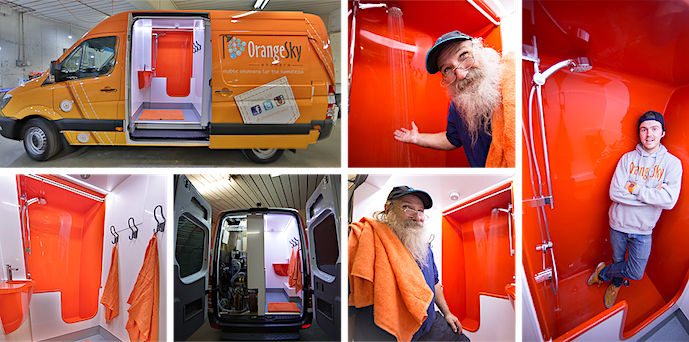
Image from orangesky.org.au
This piece could go on and on sketching what might be done for our own homeless. A poignant article in The Sydney Morning Herald by Miichael Short: How to fix homelessness: give the homeless a home? suggests several approaches. Do read it.
As a child who lived during the thirties, I saw homelessness in the raw as the Great Depression threw more and more out of work. Hungry, homeless men came to our back door in Nambour asking for money. My mother preferred to give them huge sandwiches. It was the spectre of these hapless souls that sparked my first notion of what job I would like to do: build houses for these homeless men – as it turns out, not a bad idea!
Yet here I am, all these years later, seeing the same iniquity of homelessness in our affluent country.
Will there ever be effective action in this lucky country to eliminate it?
Could we not be the Finland of the Southern Hemisphere?
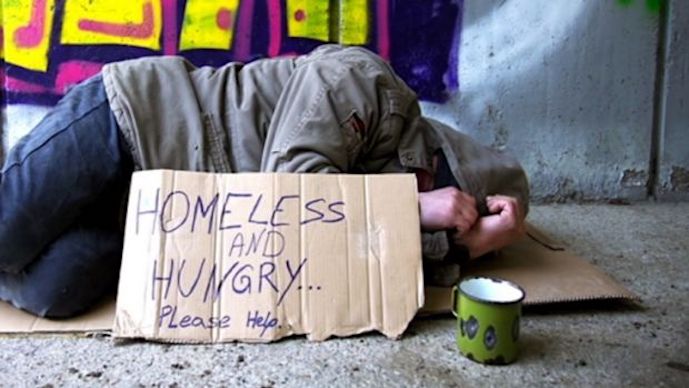
Image from news.com.au
Your opinion is welcome.
How do you see homelessness?
What solutions do you favour?
Let us know in comments below.
This article was originally published on The Political Sword
For Facebook users, The Political Sword has a Facebook page:
Putting politicians and commentators to the verbal sword
Like what we do at The AIMN?
You’ll like it even more knowing that your donation will help us to keep up the good fight.
Chuck in a few bucks and see just how far it goes!
Your contribution to help with the running costs of this site will be gratefully accepted.
You can donate through PayPal or credit card via the button below, or donate via bank transfer: BSB: 062500; A/c no: 10495969










33 comments
Login here Register here-
Andrew J. Smith -
helvityni -
Michael Taylor -
helvityni -
Harquebus -
Michael Taylor -
Jack Straw -
Kyran -
helvityni -
astra5 -
astra5 -
astra5 -
Harquebus -
astra5 -
astra5 -
astra5 -
astra5 -
king1394 -
Winston -
astra5 -
astra5 -
jimhaz -
Michael Taylor -
diannaart -
astra5 -
Michael Taylor -
Harquebus -
Michael Taylor -
corvusboreus -
corvusboreus -
Harquebus -
Had Enuff -
Freethinker
Return to home pagePossibly a symptom of inflated housing costs, no planning, increasing Americanisation of attitudes, state and society, with anyone receiving benefits demonised (of course middle class don’t admit if on benefits), and neo classist.
In Melbourne’s western suburbs some of the pubs have started doing residential again for $200 pw long term, tarted up and shared facilities. Primarily retired old single local workers catering to their budget, in one case residents are encouraged to hang round bar help pick up glasses, chat with customers etc. for few free beers. In fact I think it may have been a real estate agent initiative who lease out bar, bistro etc., then manage rooms upstairs, nice extra regular income for the landlord vs leaving empty.
For new builds, like Europe and outside Melbourne airport, economic one star Grand Prix Hotels constructed quickly, economically, small footprint and structurally sound by using prefab panels.
Major issue is getting past attitudes when nowadays everyone in Oz is a ‘savvy property investor’ and hesitant in allowing anyone state help for a home, especially for less better off, as it upsets the market (yet many if not majority of occupiers and/or investors have probably lost value anyway vs the dodgy headlines accounting for inflation).
Finally, when Rudd et al. did the GFC helicopter drop of federal funds it was criminal how state governments had few if any shovel ready infrastructure projects eg. public housing; probably as the IPA or Property Council like to keep the state and govt. out of society and business.
So proud of my old country, Finland…
Oz has become a very divisive country; everything is us and them. We have everything divided in Public versus Private; the schools, hospitals, we have pensioners and self-funded retirees, our Indigenous people are not equal to the white population, instead of referring to Australians, we speak of Immigrants and true blues. We are a young country, yet we create class systems…
Why the education in Finland is excellent, it’s because BOTH sides of politics want it, no divisions of public/private…
Only yesterday I heard one of Mal’s ministers talking about ‘inheriting’ Labor’s mess… They are obviously incapable of fixing anything, or coming up with anything progressive….
In Finland both sides of politics wanted to solve the homelessness problem; when there is a will there is a way. They don’t have the divisive Westminster system of governing; you can achieve plenty when you don’t need to fight constantly…
That’s the secret and magical ingredient isn’t it, helvityni? : “both sides”.
We keep building new prisons because we like the punishing approach; our Aboriginal youth are incarcerated for minor crimes, misdemeanours…
Instead of punishing, some countries believe in rehabilitating; I read somewhere that they have plenty of empty prisons in Holland because of that; they are offering them to the British authorities to rent…
We have spent plenty on keeping asylum seekers on Nauru and Manus, we could have done what Merkel did in Germany, have them doing the jobs the Germans didn’t want to do: why not have them building permanent homes for the homeless…and themselves…after all they are not just homeless ,they are country-less…
Just blame the homeless for being homeless and the poor for being poor. Easy peasy.
Laws are being passed in the U.S. to make it illegal to be homeless and to feed the poor.
Search criteria: u.s. homeless illegal
Fabulous article, btw, Ad astra.
This might interest you:
I don’t throw if it’s still the situation, but when I lived in Adelaide a spot called Victoria Square would be a place where dozens of Aborigines would congregate and spend the day. Victoria Square – at the time – was the last stop in the city for the Glenelg tram, so it was a very busy spot.
Sadly, some of those Aborigines would drink – and like all people who are drunk – can be very anti-social.
Channel 7 news ran a viewer poll asking: “Should Aborigines be allowed to congregate in Victoria Square?” (They didn’t ask “should people” … they specifically said “Aborigines”).
Of the respondents, 97% said “No”.
What a pity that the poll didn’t ask a question like this: “Do you think it’s deplorable that dispossessed Aborigines find themselves homeless and have nowhere to go but Victoria Square?”
A Current Affair did their monthly story demonizing welfare participants last Monday night.How dare people be homeless in the lucky country.We won’t hear of it.
“Sometimes the poor are praised for being thrifty. But to recommend thrift to the poor is both grotesque and insulting. It is like advising a man who is starving to eat less.” Oscar Wilde
Or, indeed, like advising a person who is homeless, to get a job, to enable them get a home.
The Andrew’s government seems conflicted on this. It recognized the need for more ‘emergency accommodation’ in the response to DV and, to their credit, did allocate significant funding for it. Their treatment of other sources of homelessness is less than adequate.
As you rightly point out, those caught in this situation often have other issues to deal with. There have been numerous studies on the application of holistic approaches, addressing not only the symptoms, but the actual disease. Finland, one more time, leads the way.
Whilst the problem is undeniably social, the lack of resolution is undeniably political.
Thank you Ad astra and commenters. Take care
Kyran, Oscar for all occasions, his wise words cheer me up, even when writing about the sad case of the homeless…
As least Victoria is doing something, it seems to be the most progressive State in Oz.
Andrew J Smith
Thank you for your informative comments. I was interested to read of the empty-pub enterprise.
Public housing or low rent housing has been a low priority for most governments, federal and state. It seems as if no authority has cared about the homeless, much less planned to do something about homelessness. If countries like Finland can solve this problem. why can’t we? I suspect the answer is that attempting to address homelessness is contrary to vested interests, the usual cause of political indolence or resistance.
helvityni
Your native Finland has certainly shown the way on many fronts. As you indicate in Finland BOTH sides of politics want to address homelessness; in this country it can be guaranteed that if one side suggests a solution to almost any problem, the other will oppose it. Adversarial politics is our national curse, our national shame.
Harquebus
In Trump’s America, grotesque political behaviour, such as you describe, has become the norm!
astra5
This process started long before Trump arrived on the scene. That said, he is unlikely to want to reverse the situation.
“Man is the most vicious of all animals, and life is a series of battles ending in victory or defeat.” — Donald J. Trump
Michael Taylor
Thank you for your always-encouraging words.
The sad story you tell is a vignette of what the media is doing to political discourse in Australia, and indeed elsewhere, as Joseph Kahn described last night in his Andrew Olle lecture. Truth is distorted and misinformation is deliberately disseminated. As a result, political debate is debased, and progress stifled. Vested interests, which prefer the status quo, or their own agenda, are the only beneficiaries of all of this. As we know, vested interests always trump the common good.
Jack Straw
Current Affair is a classic example of debased media, serving its own interests ahead of the interests of those it is demeaning. All that counts to Current Affairs producers is eyeballs viewing its trash.
Harquebus
You are right. Trump will not only refuse to reverse the downward spiral – he will deliberately make it much worse.
Kyran
Thank you for your always-helpful words. As you so rightly observe: “Whilst the problem is undeniably social, the lack of resolution is undeniably political.”
Over the years, a number of homeless people have lived at my home for a while. Only one had completed his education to HSC level, the others having left school as soon as they could. Lack of education leads to lack of qualifications, leads to less opportunities in the workforce and what work they get is insecure. Because the Newstart allowance is so low, and cut off at any stumble in the reporting and mutual obligation process, these people can’t rent a place, and even Social Housing may be financially difficult. Not being in a home where they have some responsibilities can also lead to limits in their ability to manage a home – they don’t have routines that the rest of us automatically carry out such as binning rubbish immediately, rinsing plates, getting their laundry done.
Because they move around a lot, they often seem to lose important documents such as their Birth Certificate, and sentimental items and photographs. Sometimes they have to abandon everything they have accumulated, such as a warm winter sleeping bag, if it’s summer time, because they can only own what they can carry.
I believe they suffer greatly from having nowhere that they can call home. Not knowing where they will sleep tonight must be a terrible stress.
The whole housing debacle in Australia is a national shame.
king1394
Your story, based on personal experience with the homeless, highlights the problems they experience other than not having a roof over their head. As you point out, these issues complicate their lives in ways that are not immediately apparent to those who have not experienced homelessness.
Thank you for sharing your understandings with us all.
Winston
I agree with your feedings. Sadly, concern about the homeless is not sufficiently important to most politicians to warrant their serious attention. Nor does addressing it attract many votes, which for most politicians is the prime criterion for paying attention.
[our Aboriginal youth are incarcerated for minor crimes, misdemeanours]
I regard this as false. Sure a decent percentage of crimes will be minor but are often committed a few times a week. Most judges avoid jailing until the charge list is extensive.
That said, I’d completely redo how we do punishment in Australian as it clearly is of no net benefit the way it is done now.
And why do you regard that as false, jimhaz?
I worked in the public housing sector from 1991 through to 2004. I watched as our department was subsumed into Human Services and standards for housing began to change; for the worse. Kennett pulled down an entire high rise in Kensington, Victoria – a building which had in the years just before Kennett’s election to premier, was extensively refurbished and was waiting for the final touch to the exterior. I saw walk-up flats deteriorate until they were condemned – the equivalent housing was never replaced, most of the inner-urban sites were sold off to developers with the unfulfilled proviso that some housing would be for low income tenants. Apart from forcing low income people to move to the outer suburbs – there was too little replacement of housing stock but it was a great time for developers.
Both sides of politics remains very much in lock step with developers.
Meeting the requirements for public housing became more and more stringent and the waiting lists grew and grew.
In the 1990’s there was homelessness, but nothing like we see in the city streets or inner suburbs now.
We used to be able to care for homeless people, we had programs, which, admittedly needed improvement but were gold standard compared to today (although nothing compares to Finland). 🙂
We know the answers, as we actually do to many human problems (for example, we can do something about climate change). We lack the support from government and sincere interest from the wealthy end of town.
diannaart
You are right – we have many of the answers to homelessness but insufficient political will to enact them, as the political dividend for politicians is too modest. The Kennett experience is a salutary example of what not to do, but the lure of developers’ money is too strong.
Self interest always trumps the common good.
jimhaz, here is something that shows it is not false at all:
Michael Taylor
Something from my bookmarks that might interest you.
http://indigenousviolence.org/dnn/Default.aspx
Thank you, Harquebus. I’ll check it out.
Harquebus,
I looked at that website.
Not to detract from the impartiality of intent or veracity of the information offered, but…
The incidents cited do not distinguish whether Indigenous Australians were the perpetrators or victims (or both).
The title page is sidelined by a quotation from Thomas Hobbes’ “Leviathan”.
There seems to be a heavy reliance upon articles from ‘Quadrant’ magazine, with research links to the ‘Bennelong society’
https://www.sourcewatch.org/index.php/Bennelong_Society
Here is a link to ‘The Restraint Project’, the ‘temperance’ group that undertook the ‘Indigenous violence’ research project;
http://web.maths.unsw.edu.au/~jim/restraintproj.htm
Oops, I missed the last letter on the link to ‘The Restraint Project’.
http://web.maths.unsw.edu.au/~jim/restraintproj.html
corvusboreus
Try the links in the citations. That site is one that I came across, bookmarked and now check out fairly regularly.
The treatment of our Aboriginal Australians which, includes homelessness and decrepit housing is something that concerns me and is one subject that I do look to Michael Taylor for informed opinion.
Australia – the lucky country no more.
Going by the elections results in Tasmania and SA after this excellent article was published it appears to me that far to many people are either selfish or plain ignorant.
How it is possible that the Tasmanian people have put the poker machines and guns above the homeless and health issues in the state?
Reading this article “The horrendous lie of our generation is the one that poverty is being reduced” by Gerry Georgatos, ( https://neoskosmos.com/en/111376/the-horrendous-lie-of-our-generation-is-the-one-that-poverty-is-being-reduced/ ) does not help much for us, people that care to be proud of what it is happens in Australia now.
Quote:
If Australia were to authentically redefine its socioeconomic staring points then we would be told that at least six million Australians live in poverty. There are two million Australian children living in poverty rather than the 740,000 children we are officially told, or allowed to believe.
The Australian Bureau of Statistics underestimates Australia’s homelessness –instead of 110,000 it’s closer to 300,000 homeless Australians. The average age of Australians is 37 years and in the twilight years of today-s 30-somethings, they will know this nation with a million homeless, a nation racked with poverty, and of a world where no government will be able to hide the extensiveness of poverty and its sufferings.
End of quote.